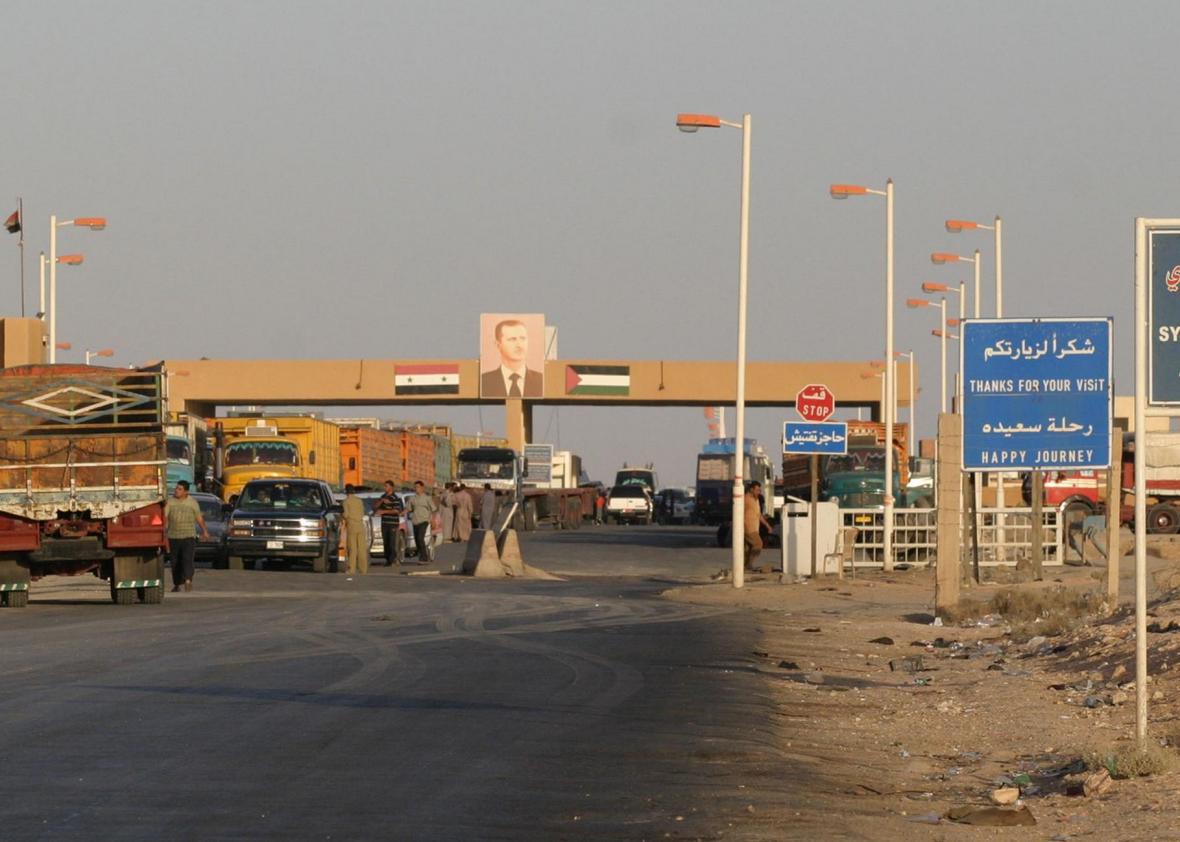The U.S. launched airstrikes against pro-Assad forces in Southern Syria on Thursday, the second attack on the regime since Donald Trump took office. Various early reports describe the targets as Syrian regime forces, pro-government Shiite militia fighters, or a mix of the two.
The Pentagon says this was a defensive strike, launched after pro-regime forces had violated an agreed deconfliction zone around a base at al-Tanf, near the Syria’s southern border with Jordan and Iraq, where U.S. and British Special Forces are training rebels to fight ISIS. According to reports, there were two violations of the zone in recent days. From CBS:
In one incident, 27 regime vehicles drove within 18 miles of al-Tanf, which breached the 34 mile radius of the army convoy. U.S. aircraft attempted to buzz the regime, but when the convoy didn’t turn around, they conducted a strike against some of the vehicles.
It’s not clear why regime forces were operating in this area. It’s also not clear how many casualties the U.S. airstrike caused, though the strike reportedly hit a tank and two earth movers. The U.S.-led coalition reportedly also tried to warn the Syrian government through a hotline established with Assad-allied forces, but that didn’t work.
The rebels being trained at al-Tanf are from a number of Arab rebel groups, referred to by the U.S. as Vetted Syrian Opposition, or VSO, who oppose both the Assad regime and ISIS. Last week, BuzzFeed reported that U.S. special forces have been increasingly fighting alongside these rebel groups in Southern Syria, a region that has seen an increasing amount of ISIS activity as the group has lost territory elsewhere. Al-Tanf came under attack by ISIS in April and Russian aircraft bombed the base last summer.
As the Wall Street Journal’s Yaroslav Trofimov notes, Thursday’s strike is significant not because the U.S. has once again struck Assad’s forces, but because it did so in defense of Syrian rebels. Trump was once skeptical about U.S.-backed anti-Assad rebels, saying in a 2015 debate that “we have no idea who they are,” that many may in fact be ISIS, and that in any event “we can’t be fighting ISIS and fighting Assad.” That thinking changed in April with the missile strike fired against Assad’s air force in response to Assad’s deadly chemical weapons attack.
This is not to say that the new strategy is exactly clear. Defense Secretary Mattis, for instance, said Thursday that we should not take this strike as a sign that the U.S. is getting more involved in Syria:
But increased belligerence between the U.S. and Syrian regime could further complicate not just Southern Syria but also the already extremely complicated picture in Northern Syria, where U.S. troops are on the ground alongside Kurdish, Turkish, Russian, and Syrian forces—all as worried about each other as they are about about ISIS.
